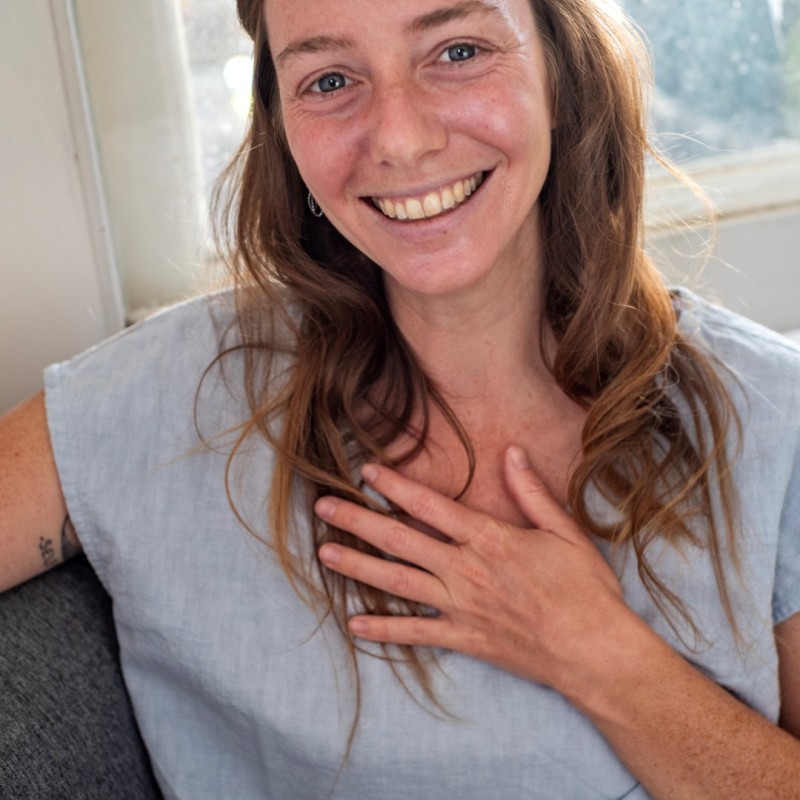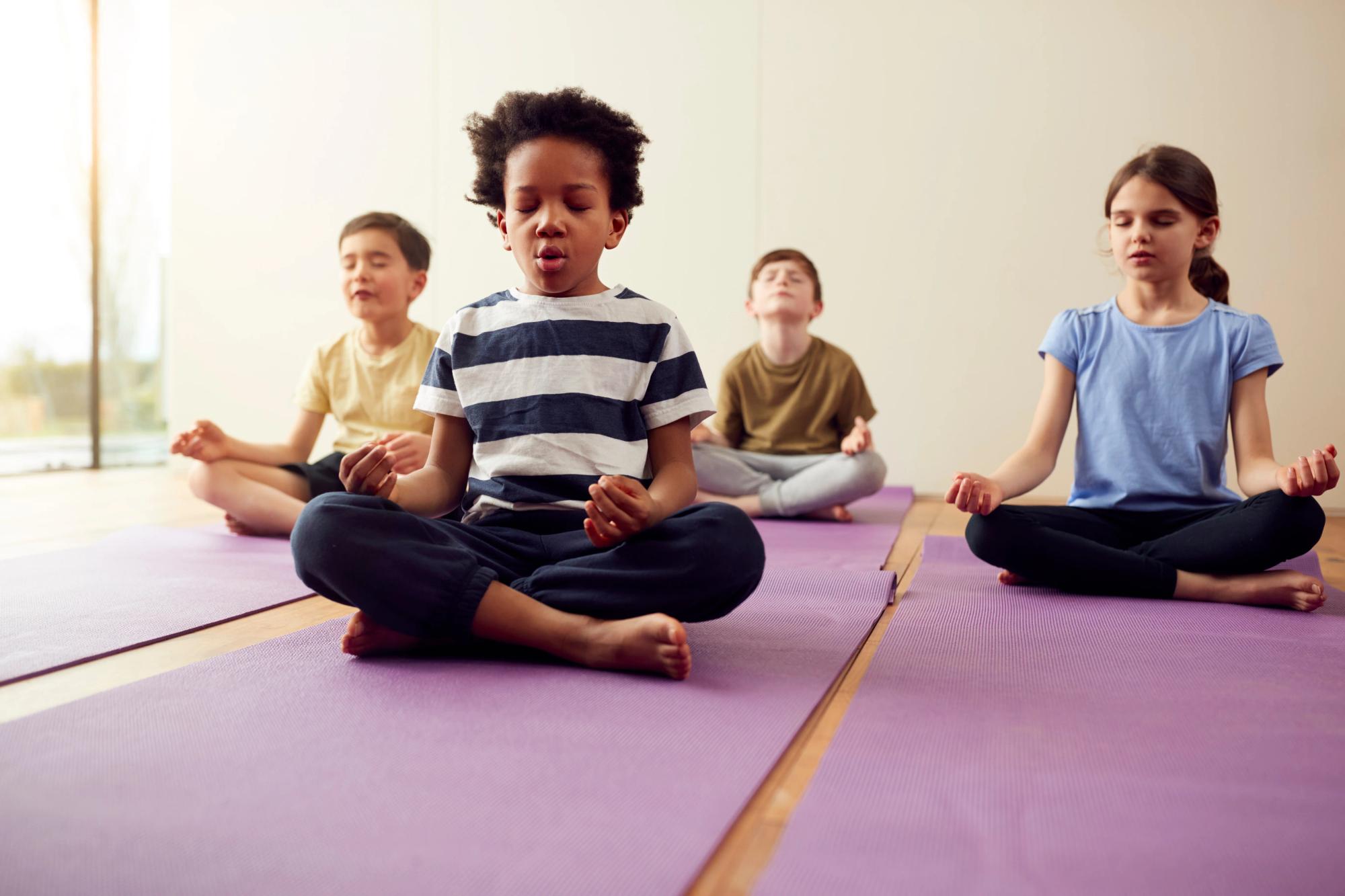Addressing Mental Health in Schools with Yoga: Rena Shoshana Forester



Rena Shoshana Forester is a Yoga teacher, Health & Wellness Coach, and mentor with nearly 12 years of professional international experience.




Rena Shoshana Forester is a Yoga teacher, Health & Wellness Coach, and mentor with nearly 12 years of professional international experience.
- Rena's lived experience shows the benefit yoga and mindfulness can have for kids.
- Schools face several challenges when implementing yoga.
- Overcoming these challenges can provide the holistic healing many schools need.
My name is Rena Shoshana Forester. I have a Bachelors of Science in Elementary Education and a Bachelors of Science in Special Education. I am also a certified, trauma-informed Yoga teacher for kids and adults. I have 10+ years of professional, international teaching experience, including two years formally teaching Mindfulness & Yoga in a school.
As a child I was diagnosed as having a learning disability and placed on a learning track that was below my cognitive abilities. As a teacher, I experienced the stress of school politics and administrative pressures hindering the effectiveness of well-intentioned teachers. Both my experience as a student and a teacher fuel my passion for improving the current landscape of mental health in schools.
Mental Wellness in School: A Full-Team Effort
Addressing mental health in schools is particularly challenging as it requires the participation of the administrators, teachers, students, and parents, in order to truly be effective.
The challenge with administrators is for them to prioritize addressing mental health in school by understanding that it is actually a basic need that will have positive ripple effects on the school’s culture and performance far greater than anyone could ever perceive.
The challenge with teachers is that they are already swamped with content that they need to teach. Asking them to add on attending to both their mental health and that of their students risks tipping them into overwhelm, and raises the genuine question: when will they be able to fit it in?
The challenge with students is arguably the easiest to solve: it’s just making lessons on mental health and learning tools relevant and engaging for them. The greater challenge is getting them to remember to use their new knowledge and tools, which often requires partnership from the grown-ups in their lives, which is a separate but related challenge.
The challenge with parents is that they, too, are often already feeling on the brink of overwhelm, so it’s hard for them to make time for learning new information and building new habits.
At the end of the day, there is much research about how addressing mental health in schools, particularly through Yoga and Mindfulness yields positive effects. A few specific findings are outlined below:
- “The effect of a Yoga intervention in children with attention deficit hyperactivity disorder (ADHD) was compared to conventional motor exercises. The yoga intervention achieved medium to high effect sizes on all measures; test scores on an attention task and parent ratings of ADHD symptoms. The yoga training was particularly effective for children undergoing pharmacotherapy.” -Haffner, Roos, Goldstein, Parzer, and Resch (2006, p.258).
- “Yoga breathing techniques including right nostril breathing, left nostril breathing, alternate nostril breathing, or breath awareness was tested in a group of school children for ten days. All four groups showed a significant average increase of 84% in spatial cognitive task test scores over control, but not in verbal task scores.” -Telles and Naveen’s (1997, p.265)
- “A small trial of yoga for boys with ADHD reported results, partly because the study was under-powered, however that yoga may still have merit as a complementary treatment for boys with ADHD already stabilized on medication.” -Jensen and Kenny (2004. p.262)
- “The important finding of this study is that the yoga module can be taught to symptomatic inpatients with ADHD and these children were able to learn the yoga procedures. This is demonstrated by the assessment of yoga performances showing that there were improvements on all four domains of the yoga performance… The finding also indicates that as they reduced/stopped the yoga practice, the symptoms worsened. This may suggest a therapeutic benefit from Yoga.” -Hariprasad, Arasappa, Varambally, Srinath, and Gangadhar (2013, p.383)
- “Results from the direct assessments indicated significant effects of the intervention across all three indices of self-regulation. There was also some evidence that the children who were most at risk of self-regulation dysfunction benefited the most from the intervention.” -Razza, Bergen-Cico, and Raymond (2015, p.372)
Tackling Mental Health Challenges in School Communities
The following is a list of how I have tackled mental health challenges in school communities:
- As a homeroom teacher, I began each day with a 3-5 minute guided meditation.
- As a homeroom teacher, I showed my students 15 minute Yoga videos and cleared space in the classroom for them to practice along.
- As a Yoga & Mindfulness teacher in a school, I regularly taught Kindergarten and First Grade age-appropriate meditations, breathing exercises, physical postures, and deep resting techniques that they used outside of class.
- As a Yoga & Mindfulness teacher in a school, I facilitated Mindful Recess: an opportunity for students through 5th grade to learn meditations, breathing exercises, physical postures, and deep resting techniques that they used outside of class.
- As a Yoga & Mindfulness teacher in a school, I facilitated Mindfulness Week where I taught every class in the school meditations, breathing exercises, physical postures, and deep resting techniques that they used outside of class, and gratitude practices.
- As a Yoga & Mindfulness teacher in a school, I created a Gratitude Board where students, teachers, and faculty could stop and write something they are grateful for on a board display for all to see. When passing by, one could pause to read what others had written, also sparking a sense of gratitude for the reader.
- As a Yoga & Mindfulness teacher in a school, I ran a workshop for high school students before final exams to teach them strategies to reduce stress and increase focus.
- As a Yoga & Mindfulness teacher in a school, I taught weekly Yoga classes after school for teachers and faculty.
Holistic Healing for Mental Health Challenges in Schools
Based on my experience, in order to solve mental health challenges in schools, all parties must be addressed, and they must be addressed holistically. This means that administrators, teachers, students, and parents alike must be learning and actively practicing the interventions. This also means that the food that the school is serving must be addressed as gut health is closely tied to mental health. I do not think that there is a one-size-fits-all solution. Rather, each school community must come together to address the mental health concerns that their community is facing in a way that meets them where they are at. Each school community has a unique set of resources including time and money to give to such an endeavor, and said resources will impact what solution is appropriate.
That being said, a general solution must include:
- An assessment of overall stress levels of the entire school community and a discussion of what might need to change based on the results.
- Regular education for the students to learn tools for emotional processing, emotional release, increasing focus, and deep relaxation
- Regular space for the teachers to emotionally process, release tension, and relax deeply.
- Regular sessions for parents to learn the same tools that their children are learning so that they can practice them together at home.
- Regular sessions for administrators for emotional processing, emotional release, increasing focus, and deep relaxation.
- Ongoing assessment of the effectiveness of these interventions.
The specific tools that ought to be taught to administrators, teachers, students, and parents include:
- Belly breathing
- Three-Part Yogic Breathing
- Alternate Nostril Breathing
- All of the basic Yogic postures that address tension in various parts of the body
- Mindfulness Meditation
- Deep Rest
Closing Thoughts and Future Initiatives
Kids today are already growing up in a world that we know nothing about with AI, new apps coming out daily, and unprecedented global crises. We have no idea what the world that they are left with will look like. That being said, it is safe to assume that their bodies will continue functioning similar to how our bodies function, as the evolution of the human body takes multiple generations to unfold. With this in mind, we can understand the importance of teaching them tools for self-regulation and healthy emotional processing, in support of optimal mental health.
Now, I invite you to envision with me: a world where teachers show up to school feeling nourished, calm, and supported. Where administrators show up to school feeling calm and centered. Where children show up to school feeling energized and resilient. Where parents drop off and pick up their children with smiles on their faces. In this world, a parent still might have an emotional outburst, but will take responsibility for it and model healthy emotional processing for their children. In this world, teachers will have a manageable amount of content to teach their classes that prioritizes knowledge and tools for improving mental health just as much as math, science, social studies, and language arts. In this world, administrators will go to every length to make sure that not only are the cognitive needs of students met, but their emotional needs are met too. In this world, schools will serve local produce, adequate protein, and healthy fats to supportive optimal functioning of the students.
For some of you, envisioning such a world may seem nearly impossible. For others, you may already be doing your best to make these things the norm. No matter where you are, simply holding this vision as possible is the first step in transforming the way mental health is addressed in schools.
-
1. Haffner, J., Roos, J., Goldstein, N., Parzer, P., & Resch, F. (2006). The effectiveness of body-oriented methods of therapy in the treatment of attention-deficit hyperactivity disorder (ADHD): results of a controlled pilot study. https://pubmed.ncbi.nlm.nih.gov/16485612/
-
2. Telles, S., & Naveen, K. V. (1997). Yoga for rehabilitation: An overview. Indian J Med Sci, 51, 123-7. https://pubmed.ncbi.nlm.nih.gov/9355699/
-
3. Jensen, P. S., & Kenny, D. T. (2004). The effects of yoga on the attention and behavior of boys with attention-deficit/ hyperactivity disorder (ADHD) Journal of Attentional Disorders, 7, 205–216. https://pubmed.ncbi.nlm.nih.gov/15487477/
-
4. Hariprasad, V. R., Arasappa, R., Varambally, S., Srinath, S., & Gangadhar, B. N. (2013). Feasibility and efficacy of yoga as an add-on intervention in attention deficit-hyperactivity disorder: An exploratory study. Indian Journal of Psychiatry, 55, 379–384. https://pubmed.ncbi.nlm.nih.gov/24049203/
-
5. Razza, R. A., Bergen-Cico, D., & Raymond, K. (2015). Enhancing preschoolers’ self-regulation via mindful yoga. Journal of Child and Family Studies, 24, 372-385. doi: 10.1007/s10826-013-9847-6. https://psycnet.apa.org/record/2013-36521-001
-
6. Yaffa, A & G. Teaching Rainbow Kids Yoga: The Complete Toolbox for all Children and Family Yoga Teachers. 11-12.
Our Promise
How Is Recovery.com Different?
We believe everyone deserves access to accurate, unbiased information about mental health and recovery. That’s why we have a comprehensive set of treatment providers and don't charge for inclusion. Any center that meets our criteria can list for free. We do not and have never accepted fees for referring someone to a particular center. Providers who advertise with us must be verified by our Research Team and we clearly mark their status as advertisers.
Our goal is to help you choose the best path for your recovery. That begins with information you can trust.





